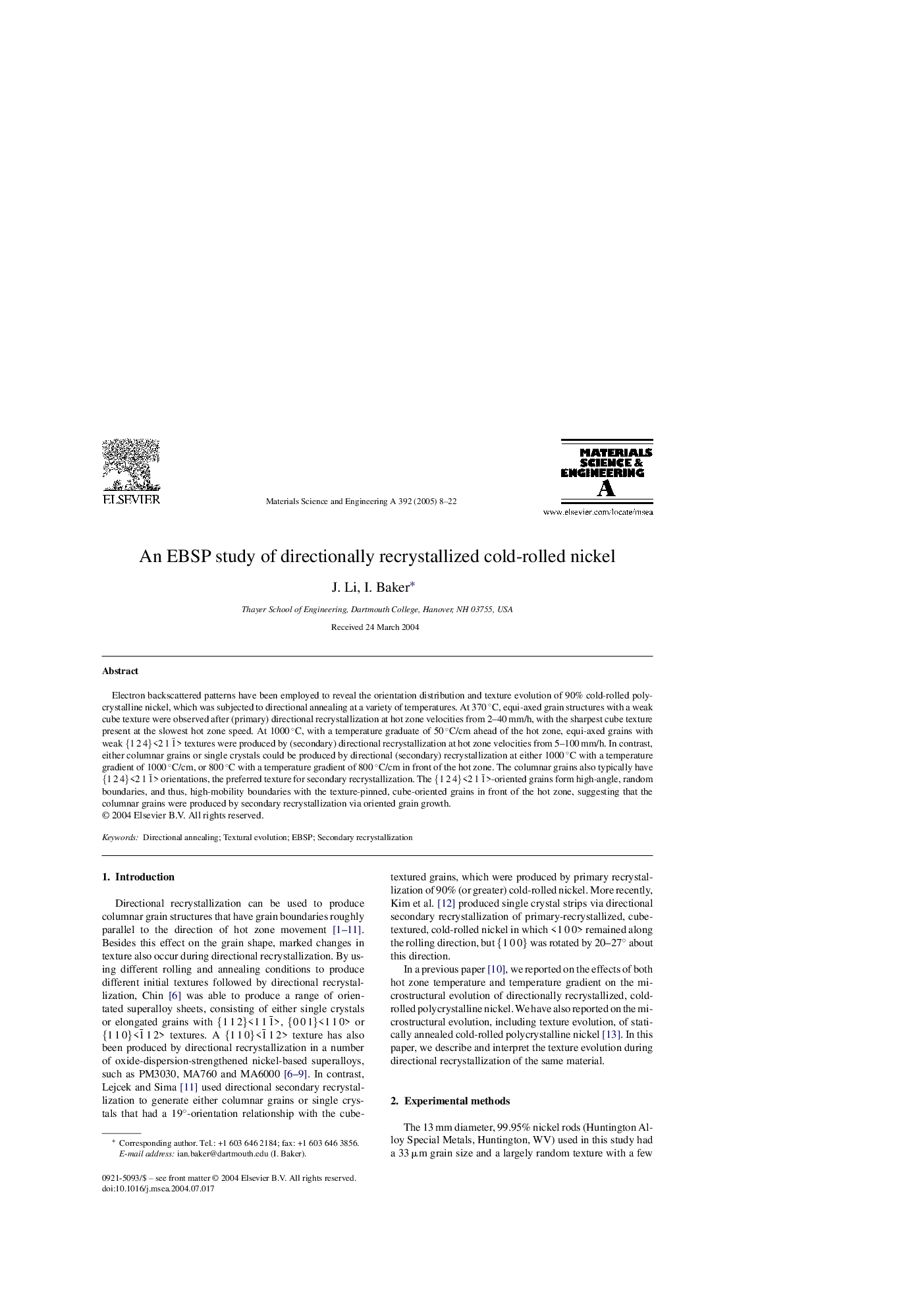| Article ID | Journal | Published Year | Pages | File Type |
|---|---|---|---|---|
| 9796535 | Materials Science and Engineering: A | 2005 | 15 Pages |
Abstract
Electron backscattered patterns have been employed to reveal the orientation distribution and texture evolution of 90% cold-rolled polycrystalline nickel, which was subjected to directional annealing at a variety of temperatures. At 370 °C, equi-axed grain structures with a weak cube texture were observed after (primary) directional recrystallization at hot zone velocities from 2-40 mm/h, with the sharpest cube texture present at the slowest hot zone speed. At 1000 °C, with a temperature graduate of 50 °C/cm ahead of the hot zone, equi-axed grains with weak {1 2 4}<2 1 1¯> textures were produced by (secondary) directional recrystallization at hot zone velocities from 5-100 mm/h. In contrast, either columnar grains or single crystals could be produced by directional (secondary) recrystallization at either 1000 °C with a temperature gradient of 1000 °C/cm, or 800 °C with a temperature gradient of 800 °C/cm in front of the hot zone. The columnar grains also typically have {1 2 4}<2 1 1¯> orientations, the preferred texture for secondary recrystallization. The {1 2 4}<2 1 1¯>-oriented grains form high-angle, random boundaries, and thus, high-mobility boundaries with the texture-pinned, cube-oriented grains in front of the hot zone, suggesting that the columnar grains were produced by secondary recrystallization via oriented grain growth.
Related Topics
Physical Sciences and Engineering
Materials Science
Materials Science (General)
Authors
J. Li, I. Baker,
